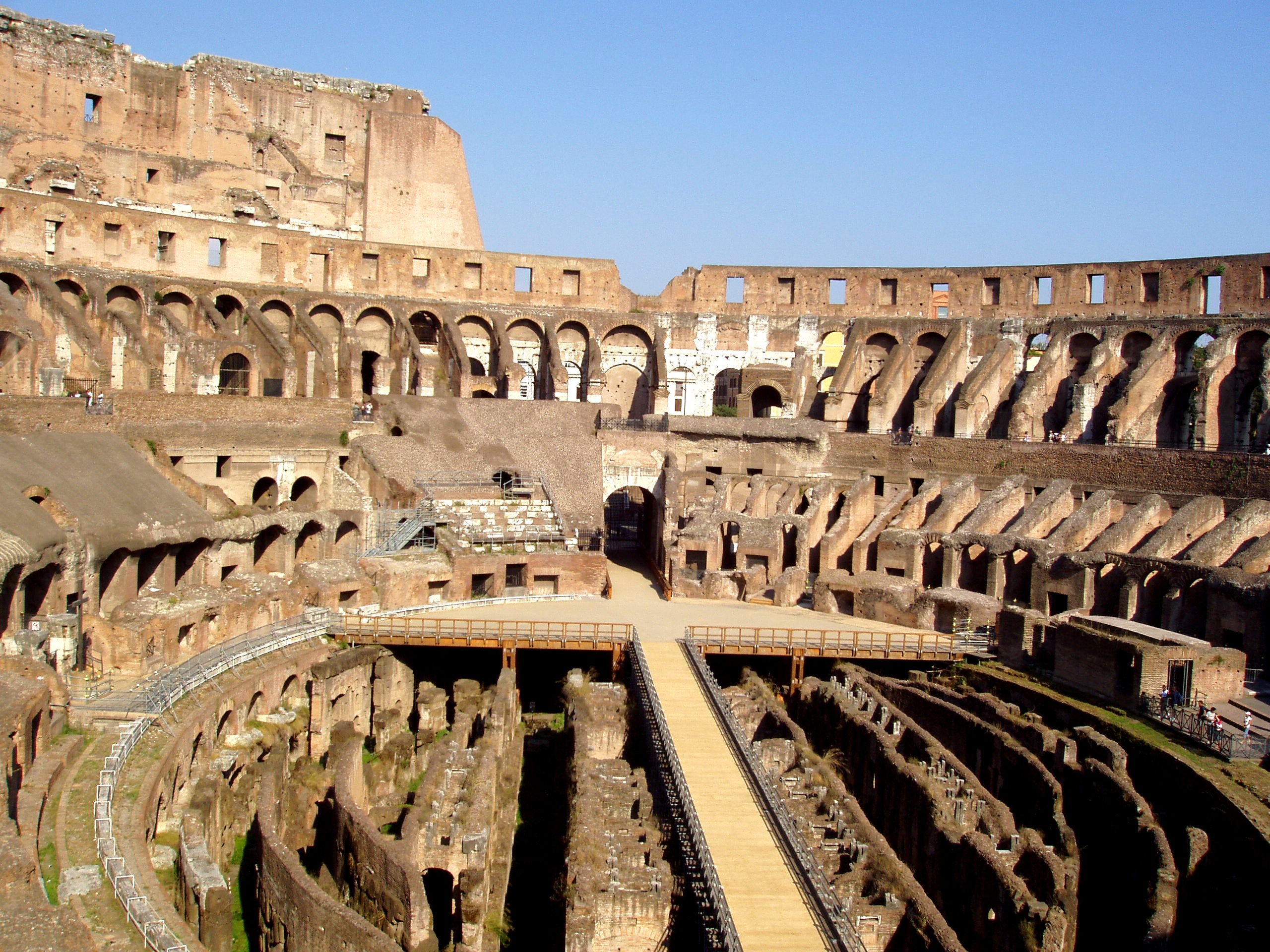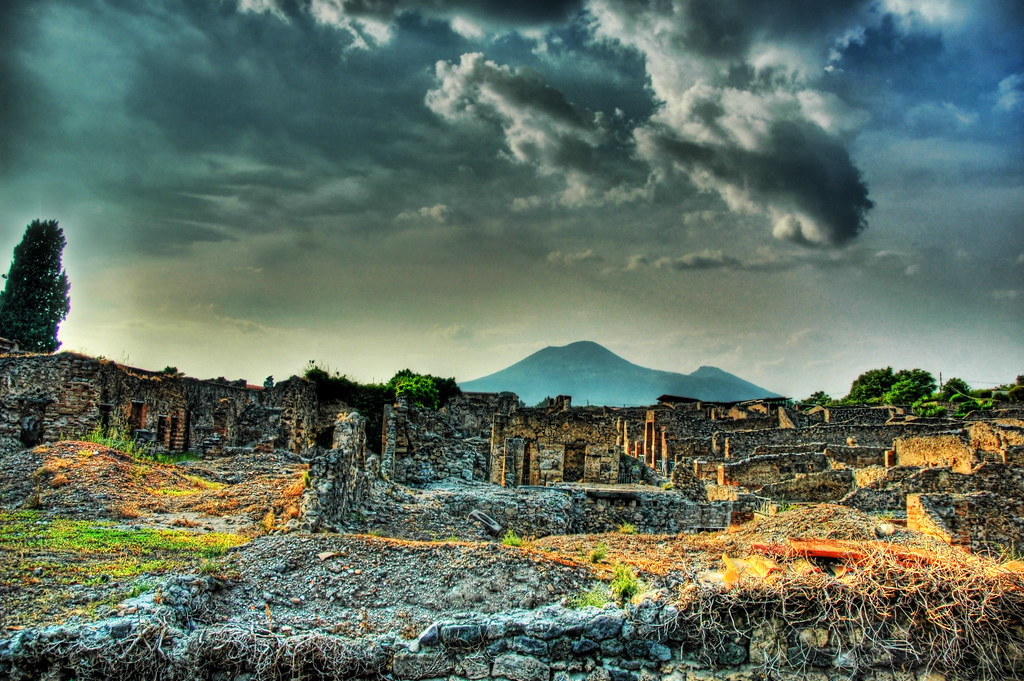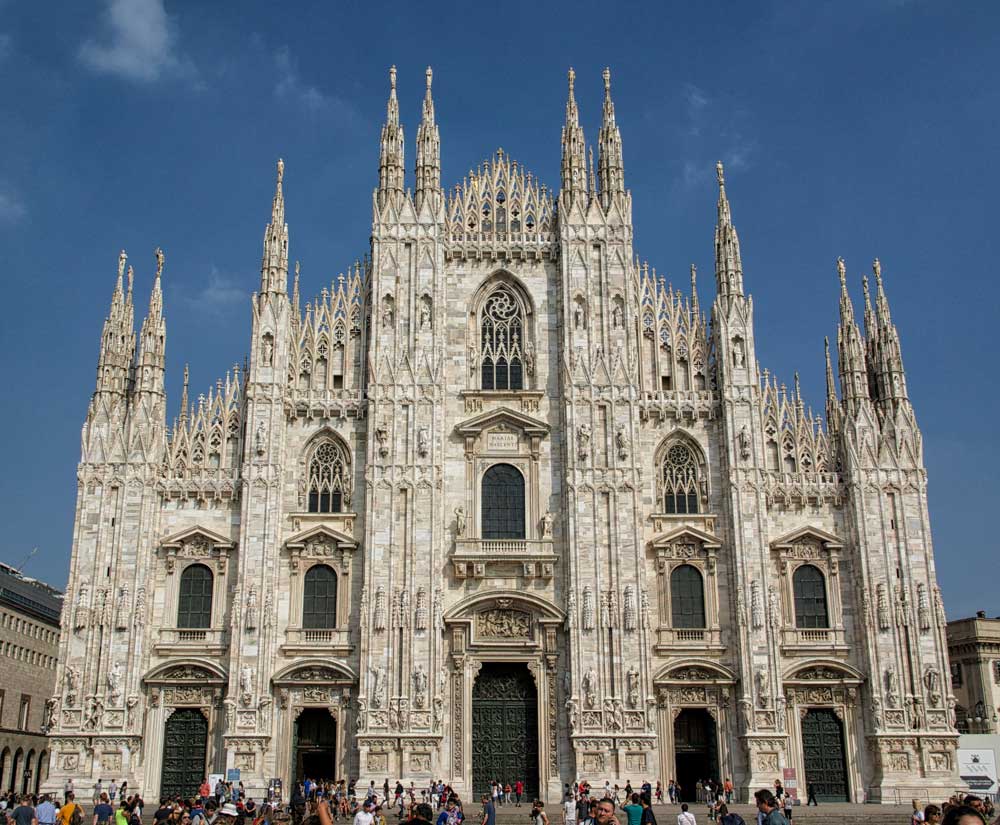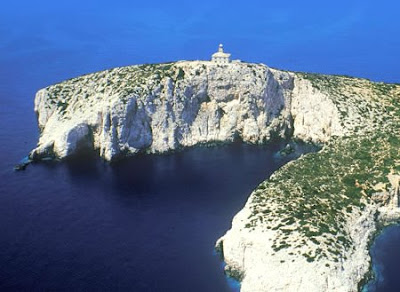Italy… a country so rich in culture, art and history that it's hard to narrow down its highlights. The number of books on the subject shows just how fascinating the area is to so many tourists with a yen for historical discovery, and this article could in fact be several tomes in length. For brevity, I have picked out the very best Italy has to offer – if you only visit 5 historical places in Italy, these should be them. Unfortunately, they're not within easy reach of each other, so you may have to book several luxury resorts in Italy if you wish to tackle them all in one go!
Wednesday, August 13, 2008
The Coliseum - Italy
Rome's Coliseum is another one for those interested in ancient history – but even those who aren't can't fail to be impressed by the structure! Standing 165 feet tall and measuring 600 feet long, this legendary historical place in Italy held up to 50,000 screaming spectators for blood soaked fights to amuse the gathered crowds – which would include the emperors of the time.


Although the fighters in the ancient ring were typically trained gladiators or convicted prisoners of war, you would occasionally get glory hunting members of the public wanting to try their luck – though, more often than not they overestimated their skills and suffered the ultimate consequences for their bravery...

Although the fighters in the ancient ring were typically trained gladiators or convicted prisoners of war, you would occasionally get glory hunting members of the public wanting to try their luck – though, more often than not they overestimated their skills and suffered the ultimate consequences for their bravery...
The Ruins of Pompeii - Italy
Over the last 200 years, the ruins of Pompeii have been successfully excavated to reveal an incredibly preserved city that was lost to Mount Vesuvius' eruption in 79 A.D.


Having lain in ash for 1700 years, wandering round the ruins is a haunting, yet fascinating experience and something that everyone with an interest in ancient history. As the ruins cover such a large area, this may not be one historical place in Italy that you can see in within a single day.


Having lain in ash for 1700 years, wandering round the ruins is a haunting, yet fascinating experience and something that everyone with an interest in ancient history. As the ruins cover such a large area, this may not be one historical place in Italy that you can see in within a single day.
The Vatican City - Italy
The smallest independent country in the world warrants its own place as an historical sight in Italy. With a population of just 932, the holy city still manages to never feel empty thanks to the seemingly constant influx of tourists and Catholics eager to see the Pope.

In terms of historic value, the place oozes it – from the medieval walls to the city to the Sistine Chapel and its famous ceiling painting to the seemingly endless stream of museums, the Vatican City should be on every historical tourist's Italy hit-list.

In terms of historic value, the place oozes it – from the medieval walls to the city to the Sistine Chapel and its famous ceiling painting to the seemingly endless stream of museums, the Vatican City should be on every historical tourist's Italy hit-list.
Duomo di Milano - Italy
One of the world's largest Cathedrals, the Duomo di Milano is a magnificent structure that really makes an impression from the second you first see it.

Work building it began in the 14th century, and continued all the way up to the 19th – in a way, it is still unfinished as work continues to be performed upon it. Its spire reaches 349 feet, and it has a capacity of 40,000 – if you're used to seeing local parish churches, this is a real eye-opener!

Work building it began in the 14th century, and continued all the way up to the 19th – in a way, it is still unfinished as work continues to be performed upon it. Its spire reaches 349 feet, and it has a capacity of 40,000 – if you're used to seeing local parish churches, this is a real eye-opener!
Basilica di San Miniato al Monte
When it comes to Florence, it's hard to narrow down the spot which captures the very essence of the history, but for me the Basilica di San Miniato al Monte is as close as you can get.

Construction on this beautiful church was begun in 1013 in the name of St. Miniato – an Armenian Prince beheaded for being a Christian. Legend has it that after being thrown to the beasts in the Amphitheater, a panther refused to eat him. When beheaded by the emperor, Miniato is alleged to have physically carried his head up the hill of Mount Fiorentinus to his hermitage, which later became the site of the church. Whether or not you believe the legend attached to it or not, there is no doubt that the Italian historical sight is truly beautiful, and it is one of the most tranquil places in Italy, let alone Florence.

Construction on this beautiful church was begun in 1013 in the name of St. Miniato – an Armenian Prince beheaded for being a Christian. Legend has it that after being thrown to the beasts in the Amphitheater, a panther refused to eat him. When beheaded by the emperor, Miniato is alleged to have physically carried his head up the hill of Mount Fiorentinus to his hermitage, which later became the site of the church. Whether or not you believe the legend attached to it or not, there is no doubt that the Italian historical sight is truly beautiful, and it is one of the most tranquil places in Italy, let alone Florence.
Halong Bay Vietnam
Ha Long Bay - means "Bay of the Descending Dragon" in the Vietnamese language.
The bay consists of a dense cluster of 3000 limestone monolithic islands, each topped with thick jungle vegetation, which rise spectacularly from the ocean. Several of the islands are hollow, with enormous caves. Hang Dau Go (Wooden stakes Cave) is the largest grotto in the Halong area. French tourists visited in the late 19th century, and named the cave Grotte des Merveilles. Its three large chambers contain large numerous stalactites and stalagmites (as well as 19th century French graffiti).









Some of the islands support floating villages of fishermen, who ply the shallow waters for 200 species of fish and 450 different kinds of mollusks. Many of the islands have acquired their names as a result of interpretation of their unusual shapes: such names include Voi Islet (elephant), Ga Choi Islet (fighting cock), and Mai Nha Islet (roof). 989 of the islands have been given names. Birds and animals including bantams, antelopes, monkeys, and iguanas also live on some of the islands.
Halong Bay Vietnam video:
The bay consists of a dense cluster of 3000 limestone monolithic islands, each topped with thick jungle vegetation, which rise spectacularly from the ocean. Several of the islands are hollow, with enormous caves. Hang Dau Go (Wooden stakes Cave) is the largest grotto in the Halong area. French tourists visited in the late 19th century, and named the cave Grotte des Merveilles. Its three large chambers contain large numerous stalactites and stalagmites (as well as 19th century French graffiti).









Some of the islands support floating villages of fishermen, who ply the shallow waters for 200 species of fish and 450 different kinds of mollusks. Many of the islands have acquired their names as a result of interpretation of their unusual shapes: such names include Voi Islet (elephant), Ga Choi Islet (fighting cock), and Mai Nha Islet (roof). 989 of the islands have been given names. Birds and animals including bantams, antelopes, monkeys, and iguanas also live on some of the islands.
- 1. Hang Trinh Nu (Virgin Cave)
- 2. Pelican Cave (Hang Bo Nau)
- 3. Cave of Awe (Hang Sung Sot)
- 4. Dong Hang Hanh
- 5. Ao Tien
- 6. Hang Luon
- 7. Tuan Chau
- 8. Poem Mountain
Halong Bay Vietnam video:
Tuan Chau - Halong Bay Vietnam
Tuan Chau island or Sentinel Chau Island is 3 km west of Dau Go cave. The island is approximately 3 km2. This island is inhabited by people. The nurturing hands of humans have turned this island into a fertile farm producing vegetables and fruits for the outlying mining and fishing villages of Ha Long Bay.
According to the inhabitants, Tuan Chau is a derivative of two words. Before the revolutionary war, each island was under the surveillance of an officer. Each was in charge of a group of sentinels assigned to keep security for one island in the bay. There were several of such officers assigned to Ha Long. The Vietnamese words, linh tuan means sentinel(s) and tri Chau means mandarin (officer) Chau, hence the combination of the two words means Tuan Chau or Sentinel Chau.
There is a bamboo hut on the island that has became a shrine, since it was rumored that this place was favored by Ho Chi Minh when he visited Ha Long. The hut is maintained and kept by the people of the island. Today visitors to the island can visit the hut as if it was a historical monument.
According to the inhabitants, Tuan Chau is a derivative of two words. Before the revolutionary war, each island was under the surveillance of an officer. Each was in charge of a group of sentinels assigned to keep security for one island in the bay. There were several of such officers assigned to Ha Long. The Vietnamese words, linh tuan means sentinel(s) and tri Chau means mandarin (officer) Chau, hence the combination of the two words means Tuan Chau or Sentinel Chau.
There is a bamboo hut on the island that has became a shrine, since it was rumored that this place was favored by Ho Chi Minh when he visited Ha Long. The hut is maintained and kept by the people of the island. Today visitors to the island can visit the hut as if it was a historical monument.
Pelican Cave (Hang Bo Nau)
Unlike Dau Go cave, Bo Nau cave is not as deep and large. Looking out from the cave the visitor can enjoy the scenic beauty of Ha Long. The clear blue water with rocky formations rising forms a picturesque setting. Bo Nau is a compound word derived from two words, bo cau meaning pigeon and nau meaning brown. Bo Nau literally means brown pigeon. For some reason, many foreign translations refer to this cave as Pelican cave.
According to the fishermen in this region, long ago, when there were still few visitors, Bo Nau cave was home to thousands of pigeons. Today as more visitors and people begin to inhabit the surrounding islands, the pigeons have left until only the name Bo Nau remains out of habit of the local fishermen.
According to the fishermen in this region, long ago, when there were still few visitors, Bo Nau cave was home to thousands of pigeons. Today as more visitors and people begin to inhabit the surrounding islands, the pigeons have left until only the name Bo Nau remains out of habit of the local fishermen.
Hang Trinh Nu (Virgin Cave)
Hang Trinh Nu or the Virgin is also known as Mid Gate cave. According to local lore, an old couple lived here long ago. The husband made a living fishing around the bay. They were very poor. They had only one daughter. She grew up to be a beautiful young woman, so beautiful that people from all around knew of her. There were many suitors and her reputation reached the local mandarin. The mandarin immediately sent his soldier to her home to capture her. She was forced to marry the old mandarin.
After much cajoling and threats the fair maiden still steadfastly refused. One day, she escaped from the mandarins home, however she was afraid to return home for fear of retaliation. After much thought, the maiden decided to go to Mid Gate cave to commit suicide. Her body turned into the stone statue lying atop a flat surface. Since then, Mid Gate cave became known as Virgin cave.
Virgin cave tunnels through the middle of an island approximately 2 km long. Along the tunnel, there are many chambers. Each is famous for a different reason. All are unique in their beauty. Many visitors to the cave are awed by its beauty and so the name Hang Sung Sot was given to the outer chamber of the Virgin cave. Sung Sot literally means astonishment or awe.
After much cajoling and threats the fair maiden still steadfastly refused. One day, she escaped from the mandarins home, however she was afraid to return home for fear of retaliation. After much thought, the maiden decided to go to Mid Gate cave to commit suicide. Her body turned into the stone statue lying atop a flat surface. Since then, Mid Gate cave became known as Virgin cave.
Virgin cave tunnels through the middle of an island approximately 2 km long. Along the tunnel, there are many chambers. Each is famous for a different reason. All are unique in their beauty. Many visitors to the cave are awed by its beauty and so the name Hang Sung Sot was given to the outer chamber of the Virgin cave. Sung Sot literally means astonishment or awe.
Best Croatia lighthouses
Lighthouses on the Croatian islands and promontories are special places for a unique holiday. Choose a lighthouse in the vicinity of tourist centers or a lighthouse in the open sea - your own "paradise" far away from the hustle and bustle of everyday life.


Croatia Palagruza lighthouse
Palagruza lighthouse was built in 1875 on the island of the same name, placed in the middle of the Adriatic sea, between the Italian and Croatian coasts, 68 NM south of Split and 26 NM south of the island of Lastovo. This historically rich island of exceptional beauty is Croatia's furthest island. The island itself is 1400 m long, 300 m wide and 90 m high, and is covered in Mediterranean vegetation.

Since the lighthouse building is placed in the middle of the island at the height of 90m, we do not recommend holidays on Palagruza for the elderly or for those with health problems. There are two four-bed apartments in the spacious lighthouse building.

Since the lighthouse building is placed in the middle of the island at the height of 90m, we do not recommend holidays on Palagruza for the elderly or for those with health problems. There are two four-bed apartments in the spacious lighthouse building.
Croatia Susac lighthouse
The island of Susac, off of navigation routes, is 23 NM south of the island of Hvar and 13 NM west of the island of Lastovo. It is surrounded by endless open sea that makes you feel completely secluded from the rest of the world. This sensation is even stronger than on the island of Palagruza from which you can sometimes catch a glimpse of the Italian coast. When viewed from a distance, it seems as though Susac consists of two islands.

Susac lighthouse was built in 1878 on the highest point of the extremely steep southern side of the island, where there are numerous cliffs jetting out of the deep crystal clear sea.

Susac lighthouse was built in 1878 on the highest point of the extremely steep southern side of the island, where there are numerous cliffs jetting out of the deep crystal clear sea.
Croatia Struga lighthouse
In the middle of the southern side of the island of Lastovo, at the entrance to the bay of Skrivena Luka lies the Capeof Struga where the lighthouse of the same name with a capacity of 15 people was built in 1839.

Lastovo is a scarcely inhabited island 55 NM from Split and Dubrovnik, while its archipelago consists of over 40 islands, islets and cliffs. Due to its distance from the mainland, it seems as though it emerges from the blue of the sea and sky. The lighthouse lies at the height of 70 m, at the very edge of a steep cliff that offers a splendid view of the open sea.

Lastovo is a scarcely inhabited island 55 NM from Split and Dubrovnik, while its archipelago consists of over 40 islands, islets and cliffs. Due to its distance from the mainland, it seems as though it emerges from the blue of the sea and sky. The lighthouse lies at the height of 70 m, at the very edge of a steep cliff that offers a splendid view of the open sea.
Croatia Plocica lighthouse
Plocica lighthouse, built in 1887, is placed on the island of the same name between the islands of Korcula and Hvar, and the Peljesac peninsula. The island was named after its interesting shape. Flat and low, it resembles a slate protruding out of the sea. It is one of the most beautiful landscapes on the Adriatic.

Out of all lighthouses, Plocica, along with Struga, can accommodate the most people (max. of 14) and is perfect for a Robinson Crusoe type of holiday. Plocica does not have a lighthouse keeper and the waters surrounding it are great for diving. The ground and first floor have an area of 165 square meters, while the yard is paved with stone and the tamarisks and century-old fig trees offer shade all day long.

Out of all lighthouses, Plocica, along with Struga, can accommodate the most people (max. of 14) and is perfect for a Robinson Crusoe type of holiday. Plocica does not have a lighthouse keeper and the waters surrounding it are great for diving. The ground and first floor have an area of 165 square meters, while the yard is paved with stone and the tamarisks and century-old fig trees offer shade all day long.
Subscribe to:
Comments (Atom)








